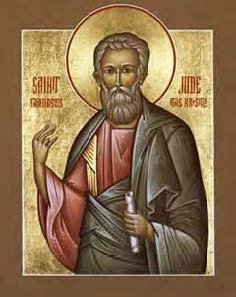 The Letter in the New Testament that is attributed to JUDE, is, perhaps, truly the strangest document in the New Testament (NT). It is one of the shortest, about a page long, and is the most enigmatic. Its authorship, its date, and the community to which it was addressed, involve “guesswork”.
The Letter in the New Testament that is attributed to JUDE, is, perhaps, truly the strangest document in the New Testament (NT). It is one of the shortest, about a page long, and is the most enigmatic. Its authorship, its date, and the community to which it was addressed, involve “guesswork”.
The author identifies himself as “Jude, a servant of Jesus Christ and brother of James”. Jude was, however, a common name in NT times. According to Mark, one of Jesus’ brothers was named Jude. Because the author of this letter also identifies himself as “brother of James,” another brother of Jesus and leader of the Christ-community in Jerusalem, it was taken for granted until recently that the author was also a brother of Jesus.
If so, that would make Jude one of the earliest documents in the NT. But modern mainline scholars have concluded that it was written much later. Though precision is impossible, most date it around 100 CE. It contains nothing that suggests the location of either the author or its recipients, though it appears to have been written to a particular community in which “certain intruders have stolen in…who pervert the grace of our God into licentiousness and deny our only Master and Lord, Jesus Christ”.
Much of the rest of the letter is a condemnation of these intruders as dreamers, scoffers, worldly people, waterless clouds, wild waves of the sea and wandering stars. They are accused of being bombastic in speech and flattering people to their own advantage. But what the conflict was about is unclear. Most likely it was a form of antinomianism, that is the conviction that God’s grace means that behavior doesn’t matter very much, if at all.
Jude and 2 Peter share so many distinctive phrases in common that it is clear that one author knew the letter of the other. The scholarly consensus is that 2 Peter used Jude rather than vice versa, and so Jude is earlier than 2 Peter.
St Jerome acknowledges that some rejected the epistle because of its citation of the apocryphal Book of Enoch, but states that the ancient authority it enjoyed and its use in the churches assured its place in the canon of the inspired writings.
The energetic and picturesque style of this epistle is reminiscent of that of the early prophets. Why not try reading it?
